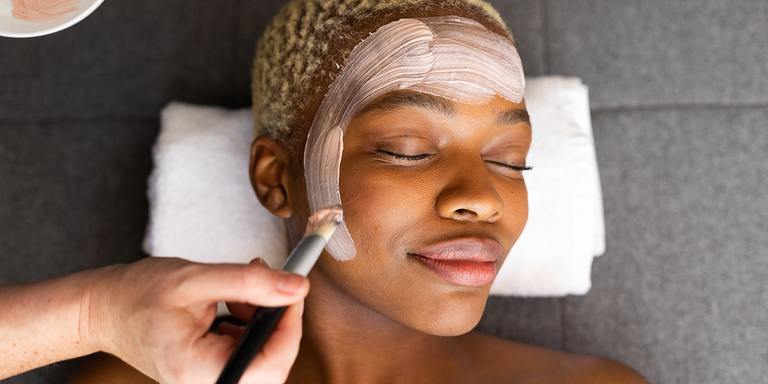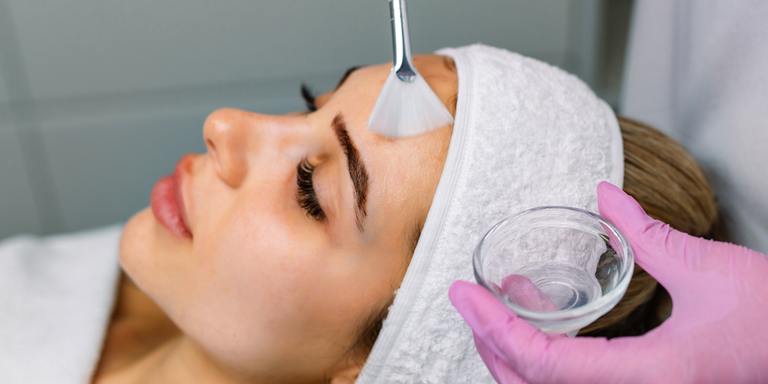
Revolutionize Your Skincare Routine with Microchanneling: A Game-Changer for Beautiful Skin

Microchanneling is an innovative skincare treatment that has gained popularity for its ability to rejuvenate the skin with minimal invasiveness. Utilizing a specialized device equipped with tiny needles, microchanneling creates microscopic channels in the skin’s surface. These channels stimulate the body’s natural healing process, promoting the production of collagen and elastin—two essential proteins that maintain skin’s firmness and elasticity.
Unlike traditional microneedling, microchanneling is designed to be less invasive, offering remarkable results with reduced discomfort and downtime. The procedure typically begins with a thorough cleansing of the skin, followed by the application of a topical numbing agent to ensure comfort during the treatment.
Key Benefits of Microchanneling
- Enhanced Collagen Production: The micro-injuries induced by the treatment trigger the skin’s repair mechanisms, leading to increased collagen and elastin production. This results in firmer, more youthful-looking skin.
- Improved Skin Texture: Microchanneling effectively reduces the appearance of fine lines, wrinkles, acne scars, and enlarged pores, leading to smoother skin texture.
- Better Absorption of Skincare Products: The microchannels allow for deeper penetration of serums and other topical products, enhancing their efficacy.
- Minimal Downtime: Due to its less invasive nature, microchanneling typically involves less recovery time compared to other treatments, allowing patients to resume their daily activities shortly after the procedure.
Microchanneling vs. Microneedling & Other Treatments
While microchanneling and microneedling share similarities, they differ in technique and outcomes. Microchanneling uses a stamp-like device with uniform needles, creating precise micro-injuries without dragging across the skin. This method reduces the risk of skin tearing and promotes more consistent results.
Compared to laser treatments and chemical peels, which often rely on heat or exfoliation, microchanneling stimulates the skin’s natural healing processes without causing significant irritation or extended downtime. This makes it an ideal option for individuals with sensitive skin or those seeking a holistic approach to skincare.
The Science Behind Microchanneling
The effectiveness of microchanneling lies in its ability to initiate a controlled healing response. The micro-injuries prompt the release of growth factors, increasing blood flow and nutrient delivery to the treated area. This cascade of events leads to the formation of new collagen and elastin fibers, enhancing skin firmness and resilience over time.
Research indicates that microchanneling can significantly improve various skin conditions by promoting cellular regeneration and enhancing product absorption. The treatment not only addresses superficial concerns but also targets deeper layers of the skin, offering long-term rejuvenation benefits.
What to Expect During and After Treatment
A typical microchanneling session lasts up to 30 minutes, depending on the treatment area. After cleansing and numbing the skin, the practitioner uses the microchanneling device to create uniform channels across the targeted area.
Patients may experience mild redness or a sensation similar to a sunburn immediately following the procedure. These effects usually subside within a few hours. To ensure optimal healing, it’s recommended to avoid harsh skincare products and direct sun exposure for several days post-treatment.
Incorporating Microchanneling into Your Skincare Routine
For best results, microchanneling treatments are often scheduled every four to six weeks, allowing the skin ample time to regenerate between sessions. Complementing the procedure with high-quality serums rich in hyaluronic acid, peptides, and antioxidants can further enhance outcomes, as these products penetrate more effectively through the microchannels.
Maintaining a consistent skincare regimen that includes gentle cleansing, moisturizing, and sun protection will help sustain the benefits of microchanneling, promoting long-lasting, radiant skin.
FAQs
What is microchanneling?
Microchanneling is a minimally invasive skincare treatment that uses a device with tiny needles to create micro-injuries in the skin, stimulating collagen and elastin production for improved skin texture and firmness.
How does microchanneling differ from microneedling?
While both treatments aim to rejuvenate the skin, microchanneling uses a stamp-like device that creates uniform channels without dragging across the skin, reducing the risk of skin damage and offering more consistent results.
What skin concerns can microchanneling address?
Microchanneling effectively treats fine lines, wrinkles, acne scars, enlarged pores, uneven skin tone, and overall skin texture.
Is there any downtime after a microchanneling session?
Most patients experience minimal downtime, with mild redness or sensitivity subsiding within a few hours to a day post-treatment.
How many sessions are needed for optimal results?
A series of treatments, typically spaced four to six weeks apart, is recommended to achieve and maintain the best results.
Can I combine microchanneling with other skincare treatments?
Yes, microchanneling can be combined with other treatments and high-quality skincare products to enhance overall skin health and appearance.
Conclusion
Microchanneling offers a revolutionary approach to skincare, harnessing the body’s natural healing processes to rejuvenate and revitalize the skin. With its ability to improve texture, reduce signs of aging, and enhance product absorption, microchanneling stands out as a powerful tool in achieving beautiful, healthy skin.
Ready to Experience The Benefits of Microchanneling? Book your appointment at AURSPA online today!
You May Like

The Glow That’s All Yours: Why Custom Facials Are a Must This Summer
When it comes to skincare, there’s no such thing as one-size-fits-all. That’s why custom facials aretailored to your unique skin type, concerns, and seasonal needs and one of the most effective and rewarding treatments you can invest

Reveal Radiant Skin: Chemical Peels at AURSPA Middleburg
Are you looking to rejuvenate your skin and achieve a radiant glow? Chemical peels at AURSPA in Middleburg, FL, offer a transformative solution to various skin concerns, from acne and hyperpigmentation to fine lines and